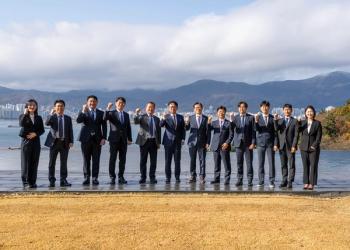
HOW TO RECOVER WASTE HEAT FROM TURBOMACHINERY
WASTE HEAT RECOVERY SYSTEMS HAVE COME OF AGE IN THE FORM OF MODERN ORGANIC RANKINE CYCLE SYSTEMS
Leveraging clean energy on awider scale has been an engineering goal for some time. Governments, conglomerates and entrepreneurs continue to invest time and resources reviewing a host of clean energy sources, such aswind, solar, fuel cells and others. However, it is clear that there is no single ideal solution, and the returns on existing ones remain questionable.
One viable option seeps out of most turbomachinery—— waste heat. Unlike wind and solar energy that have a low utilization rate, it is available 24/7 for the same investment or less.
Waste heat recovery processes capture excess low temperature heat that is a byproduct of compressors and turbines already employed in cogeneration or combined cycles. This heat, which is normally released into the atmosphere, can be converted into electricity. Currently, high temperature heat ismostly used to produce steamor hotwater. However, the heat sources below130°Chave been largely untouched.
That is changing due to advancements in turbomachinary technologies contained in Organic Rankine Cycle (ORC) systems. The ORC process uses an organic, highmolecular mass fluid that has a lower boiling point than water to enable conversion to steam at lower temperatures and therefore into useful work. While there are several benefits to employing ORC technology, waste heat recovery has the greatest advantage as it can be used for awide range of industrial applications, and is easily integrated into OEMproducts.
The heat recovery process itself is not new. It is based on the works of famed Scottish engineer William Rankine, who with Rudolf Clausius andWilliamThomson (1st Baron Kelvin), was a founding contributor to the science of thermodynamics, most notably surrounding the first of the three thermodynamic laws. He developed a complete theory of the steam engine as well as for all heat engines. Rankine’s 19th Century manuals of engineering science and practice were used for many decades after their publication.
What is new is the use of higher efficiency turbomachinery, including high-speed generators and controls inORCsystems.These technologies enable the latest systems to generate economic returns when applied to low-grade heat sources, including the heat emitted from the various stages of compressors as well as waste heat in the exhaust of gas turbines.
Today’s compressors emit 90% of the energy that is utilized to compress gas in the form of heat. Compressor OEMs have done a great job capturing this heat through cogeneration systems, mainly for facilities to be able to produce hot water. But not all facilities require hot water.
Aside from hot water production, the energy content of waste heat is not enough to convert it economically to another energy form using conventional technologies. However, the latest advancements in low-power ORC systems make it possible to cost-effectively capture and convert the waste heat into electric power.
Whether the compression is done through turbomachinery or positive displacement, the air needs to be significantly cooled to enter the next stage of compression. The temperature of the waste heat is enough to boil the working fluids currently used by ORC systems and therefore produce electricity.
Although high temperature heat from gas turbines or any other combustion process is effectively utilized in cogeneration or combined cycle processes, low-grade heat remains. To meet environmental regulations, catalysts are often used to filter out emissions before the exhaust is released into the atmosphere. In order for these catalysts to be effective, the temperature of the exhaust needs to be about 180°C to 200°C. ORC systems can use this source of low-grade heat to produce power without condensation of the exhaust in the flue.
Outside of turbomachinery, there are many untapped sources of heat from 80°C to 130°C. In most cases, converting this heat into power makes economic sense. For example, Genalta Power, Inc. is installing eight ORC modules to produce clean power from waste heat at a gas plant in Alberta, Canada. The systems will recover the excess heat from an amine stream combined with steam condensate loops to generate power for the amine treatment process that is energy intensive.
Geothermal is another application with potential. While waste heat recovery processes were once thought to be applicable only to large-scale operations, small-scale production from man-made and naturally occurring springs is beginning to realize its potential for widespread application, particularly in rural areas and as a distributed energy resource.ORC systems can use the heat fromthe hotwater to generate clean power.Thewater is then injected back into the ground to be reheated for reuse.
The advances in generating clean energy from waste heat means smaller-scale systems are economically feasible inmoremarkets than before. If employed correctly and using the right ORC-based recovery platforms, such technology reduces the carbon footprint of the system and operational costs for which it is employed, while also increasing performance and product yield. Sowhile continuing development in the use of many clean, non-hydrocarbon energy sources must continue, waste heat recovery systems used in conjunction with turbomachinery should now be a staple in that conversation.
Author
Herman Artinian is the Vice President of Business Development for Calnetix Technologies and Access Energy, a Calnetix subsidiary. The companies design, develop and manufacture high-speed permanent magnet motor generators, power electronics and magnetic bearings systems. He can be reached at hartinian@calentix.com.
Newsletter
Power your knowledge with the latest in turbine technology, engineering advances, and energy solutions—subscribe to Turbomachinery International today.





